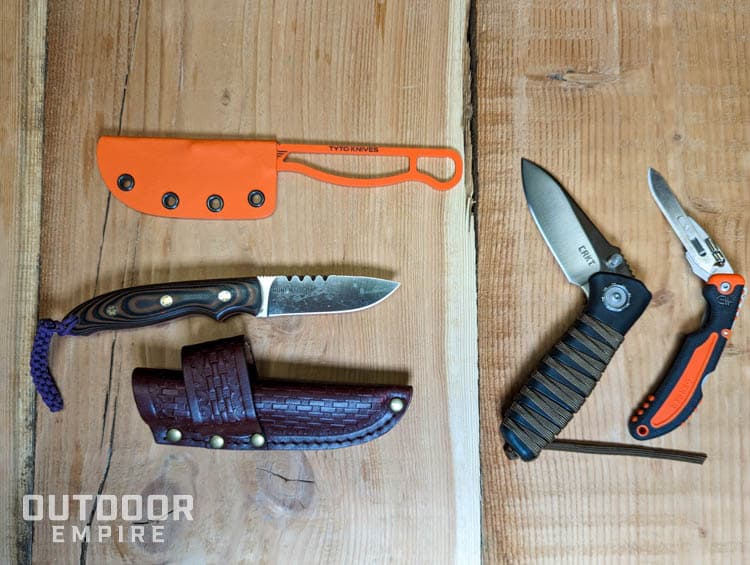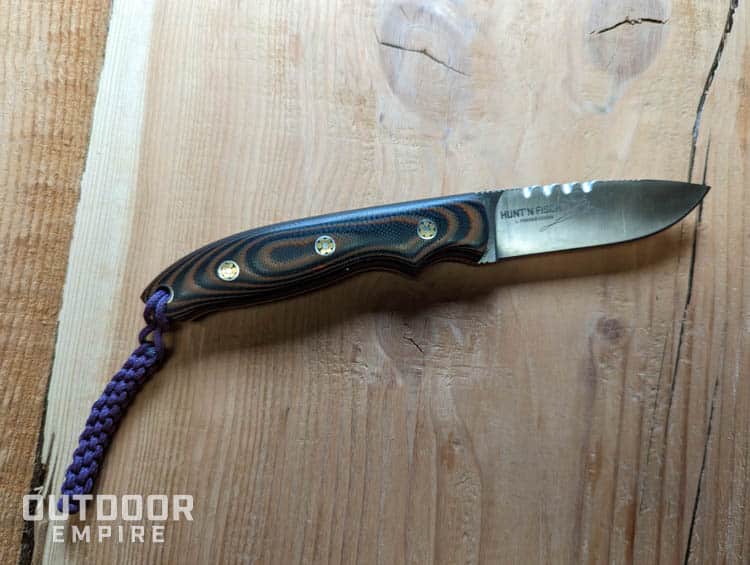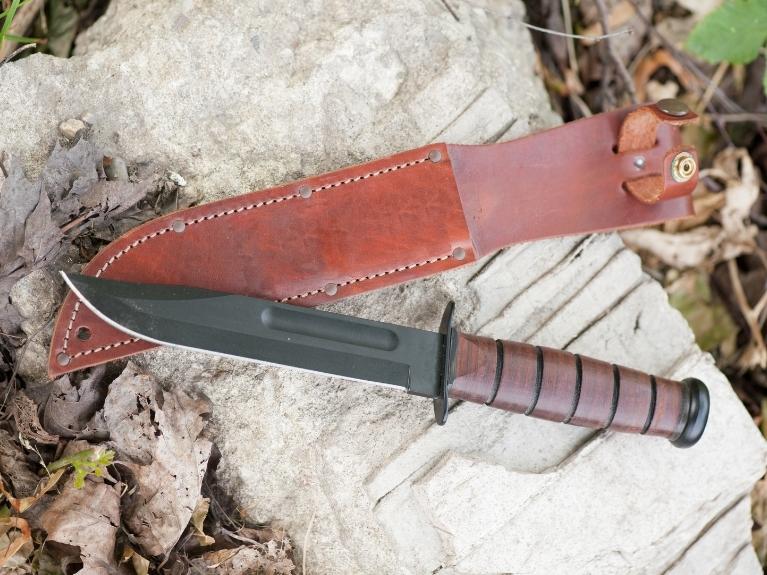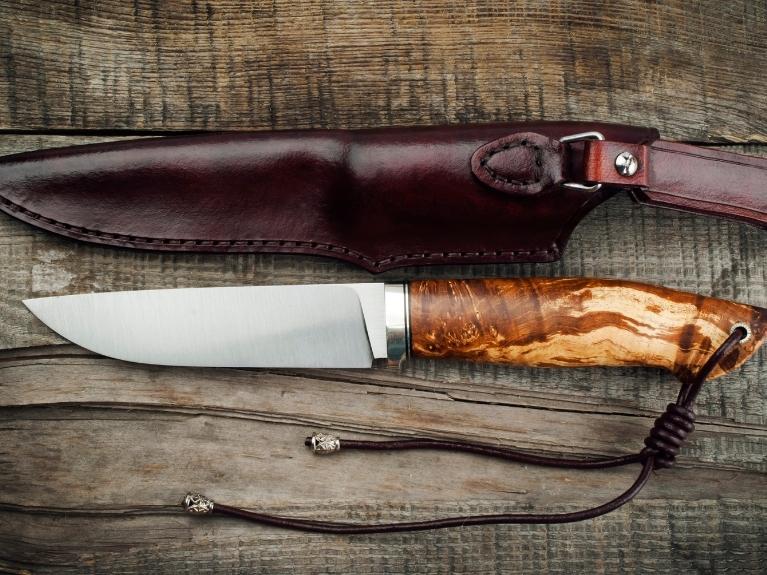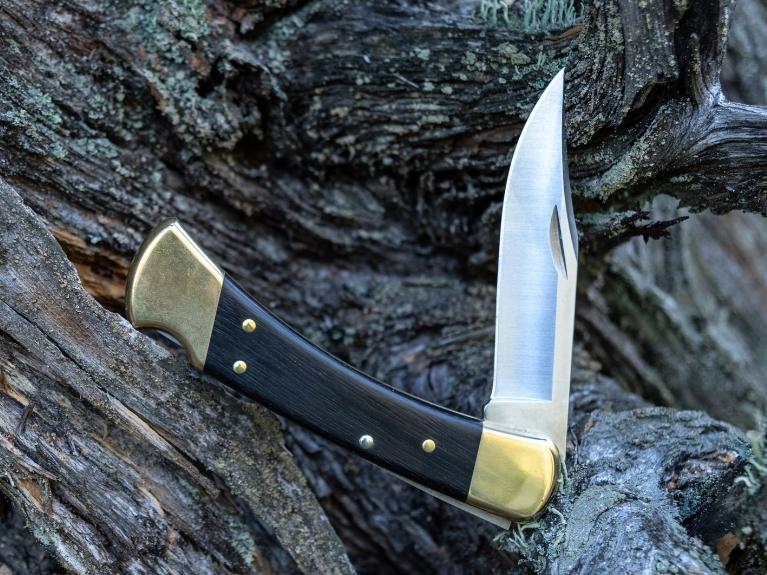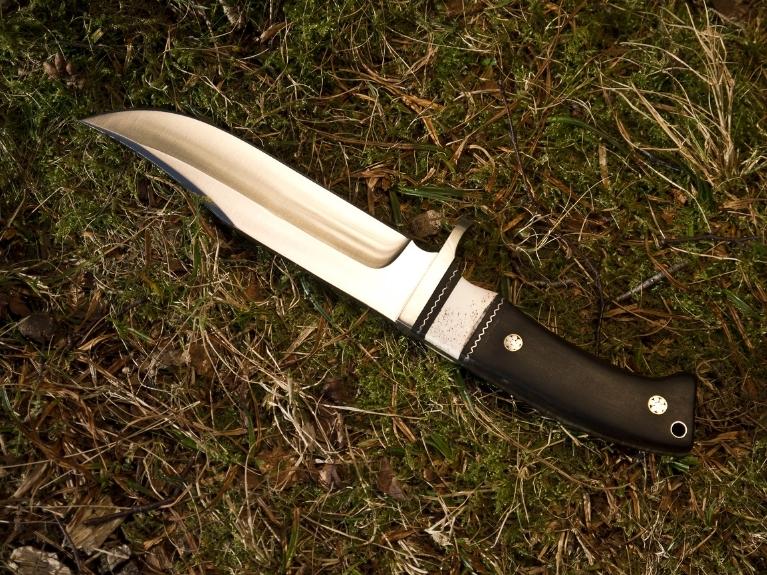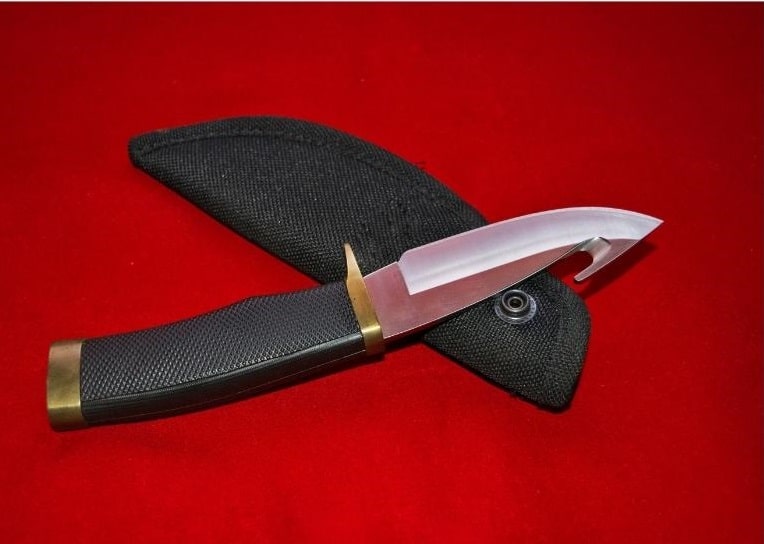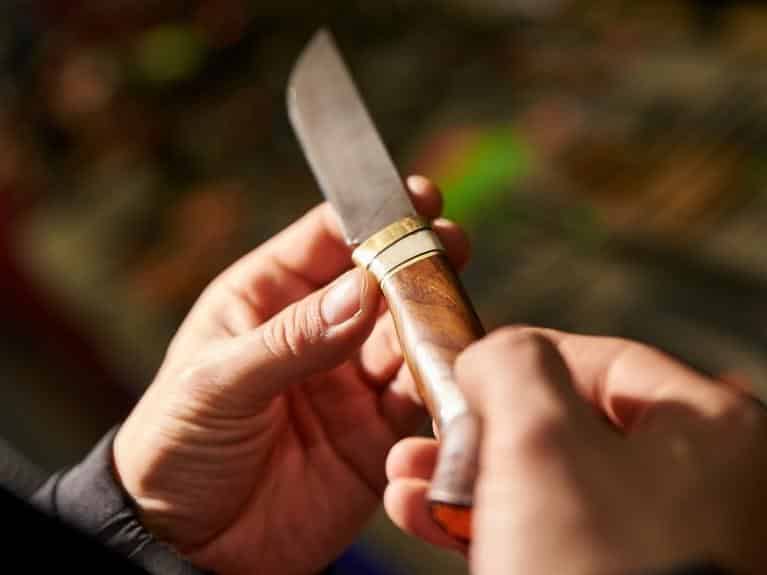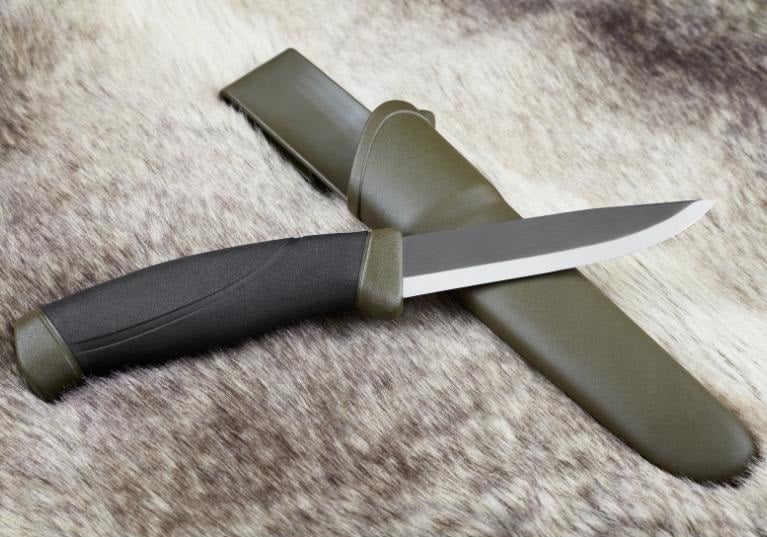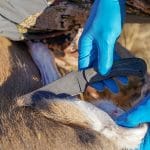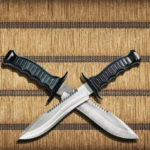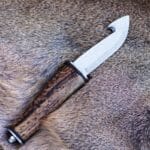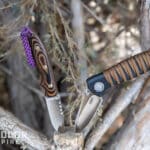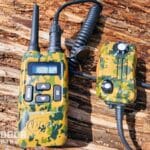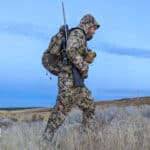We’ve all seen the pictures of the fresh kill, a bloodied knife in hand or on the fur. Hunting knives often make the highlight reel on social media or publications, and good ones are a great tool in the backcountry or woods.
With so many styles, brands, lengths, and metals to choose from, it can be difficult for novice hunters looking to purchase their first hunting knife to know which blade is best for them.
If you’re looking for a hunting knife that is durable, safe, and multipurpose, you’ll want a 4″ steel fixed blade. The style of knife is a personal preference but you can’t go wrong with a fixed drop-point blade knife. This will provide you with a great multitool that will last for years to come.
With that in mind, let’s look at the types of hunting knives out there and which one is right for you.
Watch our full guide on how to choose a hunting knife on YouTube!
Hunting Knife Blade Types
Fixed-Blade
A fixed-blade knife means that the metal from the blade runs through the handle and is not replaceable or foldable. This leads to increased sturdiness but a longer overall length.
Folding Blade
A folding blade knife has a blade that folds into the handle. Folding knives have a mechanism that locks the blade in the upright position when open but can be closed, making them easier to store. These knives often lack the sturdiness of a fixed blade but have a smaller overall profile when closed.
Interchangeable Blade
This type of knife features a universal handle with a mechanism that locks various blades in place, which can easily be swapped out. From personal experience, this knife lacks the sturdiness of a fixed blade and requires you to carry several blades, which outweighs its interchangeable blade system.
Hunting Knife Blade Metals
When looking at the metal makeup of your blade, it’s important to consider two things:
- Ability to maintain an edge
- Corrosion resistance
If you plan to utilize your hunting knife often, the blade will begin to dull with use. Every time it comes into contact with blood and water (sweat, humidity, rain, snow) increases the chance of rust. Your knife’s ability to withstand these factors will depend on the metal it’s made from.
Carbon Steel
The lower levels of chromium in carbon steel make it less resistant to rust. However, carbon steel is far harder than stainless steel, providing a sharper blade and retaining its edge for longer.
Stainless Steel
Stainless steel does a better job of corrosion resistance. Its higher levels of chromium prevent oxidation of the blade and make it more resistant to flaking and rust. However, it tends to dull faster than carbon steel.
There are a variety of alloys for both kinds of steel, each with its pros and cons. Before purchasing your knife, Google its alloy to check if it’s the right one for you.
Related: 10 Different Uses for Your Hunting Knife
Hunting Knife Styles
Here are a few of the more popular styles of hunting knives on the market.
Buck Knife
Buck Knives is a popular brand who pioneered the folding lock-blade style hunting knife. Their original design has become so popular that people refer to this general design of knife as a buck knife, even when made by other manufacturers. One of the most well-rounded hunting knives, a buck knife usually comes with a wooden or G10 (resin based composite material) handle. Between 3″ to 7″ in length, this blade can skin and gut a deer as easily as it can cut rope or shave wood.
Bowie
Created by Jim Bowie, who died defending the Alamo, this is a classic, fixed-blade hunting knife frequently kept in a sheath. Set in a bone handle, the blade commonly measures between 4″ to 12″ and can easily be used for gutting a deer.
Gutting Knife
Usually a fixed-blade knife, this style has a blade on one side and a gut hook on the backside. Most often set into a polymer or hard plastic handle, the blades generally sit between 2″ to 5″ in length.
Drop Point
An excellent knife for beginners, drop point knives have long, thin blades that make incisions on big game clean and precise. With either a polymer or wooden handle, these come in both folding and fixed configurations at an average length between 3″ and 8.”
Skinning Knife
A knife designed to skin big game, it comes in both folding and fixed configurations, with a razor-sharp, thin blade. The average length of these blades is usually between 2″ to 6″.
| Knife Style | Pros | Cons |
| Buck knife | Multi-purpose, sturdy, moderate profile, compact. | Wooden handles can become slippery with blood or water, folding knives are harder to clean. |
| Bowie knife | Thick blade, great for deboning and gutting, sturdy. | Large profile, heavy, bone handles can become slick with blood or water. |
| Gutting knife | Small profile, sturdy, added gutting and skinning capability. | Single-purpose blade. Gut hook means extra snags and lack of finger or hand placement on the back of the blade. |
| Drop Point knife | Thin blade, light, great for skinning and gutting. Small profile | Have seen both the plastic handles and thin blades break when deboning. |
| Skinning knife | Lightweight, sharp, thin blade, small profile. Great at skinning game. | Lacks multi-use capability and I have broken several outside of skinning. |
What Kind of Hunting Knife to Get
While different hunters will have different opinions, here is my recommendation based on my experience.
Blade Type: Fixed blade is the way to go. Folding knives may have a smaller overall profile, but under hard use, I’ve seen locking mechanisms fail or blades become loose, leading to injury or mangled cuts. Interchangeable blades aren’t recommended as they lack the stability of fixed blades and the profile of folding knives.
Metal: I recommend carbon steel for all hunting knives for the sharpness you can get from the steel and the edge retention. While stainless steel may be more corrosion resistant, if you take care of your knife (wash, scrub, and oil), it will take care of you.
Style: Many of these blades can be a good choice, but with a hunting knife being a multi-utility tool, hunters need a knife that can do it all. I recommend a 4″ – 5″ fixed blade, carbon steel knife. If you can find one with a G10 handle over wood, that is the complete package of hunting knives.
Hunting Knife FAQs
Where can I find a good hunting knife?
Many outdoor stores carry quality hunting knives. Online, Montana Knife Company, Half Face Blades, Winkler Knives, Buck Knives, Gerber, and Benchmade all make quality blades.
What is the best length for a hunting knife?
4″ – 5″ is the optimal length for a quality hunting knife. Any longer, and it becomes heavier and you lose dexterity.
Does the stability of a fixed blade outweigh the size of a folding knife?
I will recommend the quality of a fixed blade over the smaller size of a folding knife every time. A 4″ – 5″ fixed blade is still easily packable in a sheath and will not experience mechanical malfunctions under adverse conditions in the field.
How much does a good hunting knife cost?
This depends on your definition of “good.”
Top-of-the-line hunting knife: $250-$350
Midline hunting knife: $80-120
Budget hunting knife: $35-$60
Before purchasing your first hunting knife, research the brand, model, and steel alloy to ensure you get the best cut for your buck.

